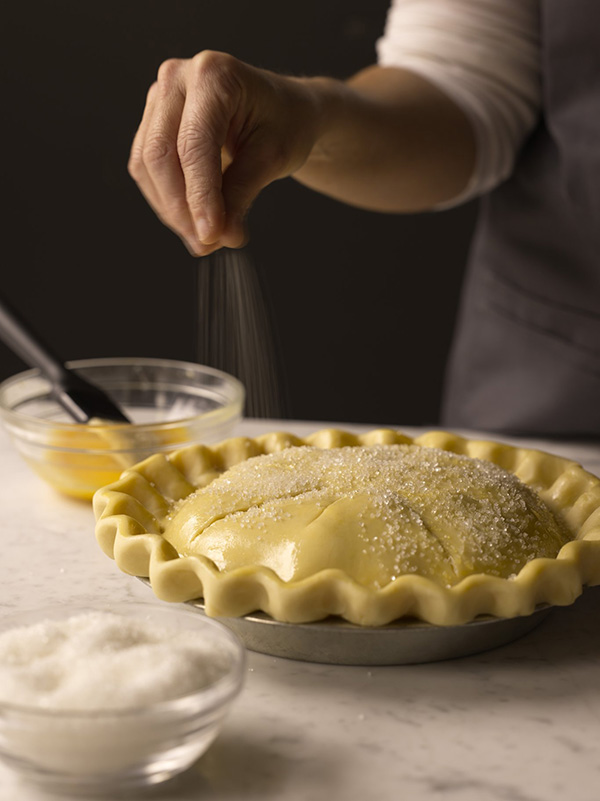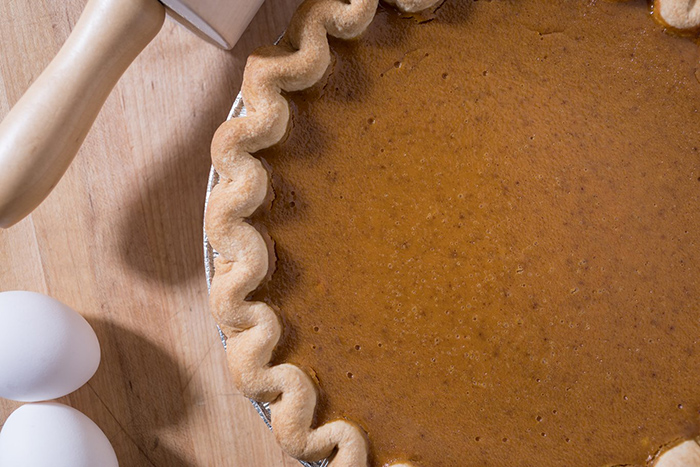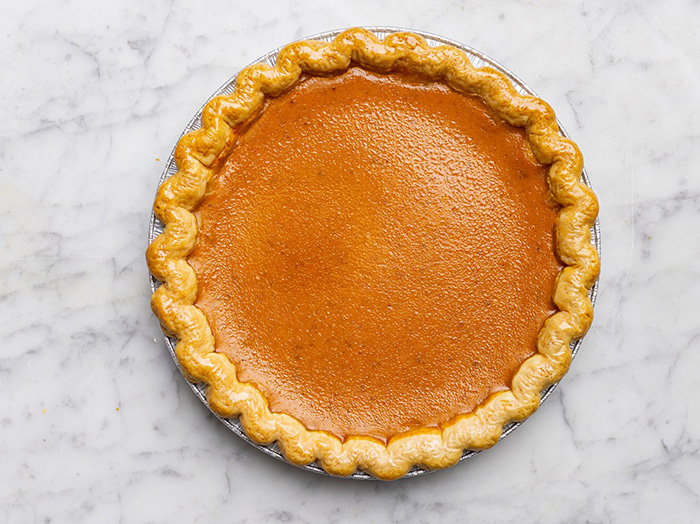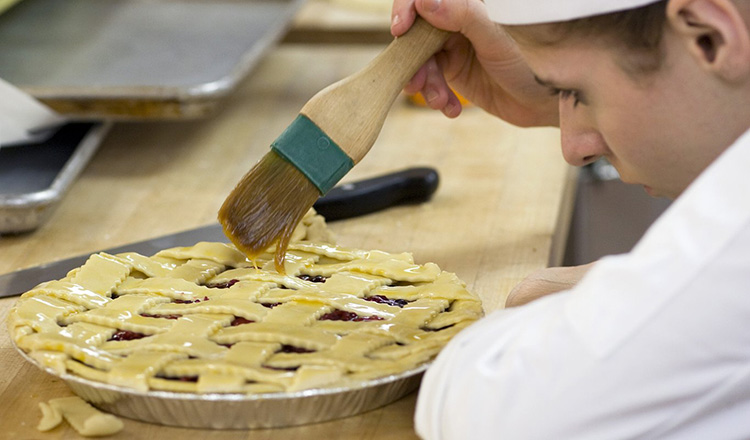Egg wash is a common recipe term—and lots of recipes take for granted that the reader knows what it means. And even if you do know the basics of an egg wash, you may not know why you’re using it.
An egg wash is a blended mixture of egg, salt, and a dash of water. Egg washes get a lot of use in the professional kitchen, and they’re often the key to making your home-made food and baked goods look like they came from your favorite restaurant.
Functionally, egg washes can be used as a “food glue” to tack down the edges of dumpling wrappers, filled pastas, puff pastry turnovers, and pie decorations. Applied before the product is cooked, the egg wash will keep corners and joined sections from splitting apart or falling off as they boil, steam, or bake. In baking, egg washes can also be used to adhere garnishes, like sesame seeds, sanding sugar, or cut-out decorations.

Egg washes are also sometimes used as a barrier between pie or tart crusts and wet fillings. If you are making a coconut cream pie, you will likely pre-bake the pie crust and then fill it with cooked coconut custard. Even a well-baked pie crust can get a bit soggy, so for an extra layer of protection, egg wash might be brushed on the inside of the crust before baking.
Egg washes are often added to a baked item for aesthetic appeal, since the protein and fat in the egg wash promotes both browning and sheen. If you’ve ever enjoyed a golden brown, glossy croissant, you can partially thank a layer of egg wash. Or if you wonder why some pies have such perfectly browned and shiny lattice? That’s the egg wash!


An egg wash can be as simple as a thoroughly beaten egg, but water is often added to help thin the mixture, ensuring an even, clump-free coat. Salt may be added for flavor and to help promote browning. We often add an additional egg yolk, for added sheen and browning.
A good basic egg wash recipe is: 1 whole egg + 1 egg yolk + 1/8 tsp salt + 1 tsp water.
Blend the mixture very well with a whisk or a fork in a small bowl. For very special items, you can even strain the mixture to remove any stray lumps which will show as runs or dark marks on your finished product.
Egg wash is applied before baking, typically with a soft-bristled pastry brush. For tasks like gluing the edges of raviolis, you may choose to swipe the mixture with your finger for a bit more precision, but for pastries and doughs, a brush is the best tool for achieving an even coat. The bristles can also be stippled gently into creases or decorative elements.
To avoid fingerprints or marks from transferring, it is best to apply the egg wash to the item in or on the pan used for baking.
When applying egg wash, make sure to apply an even, thorough, but thin coating. Areas that are missed by the wash will appear dull, lacking shine and color, and this will detract from the overall beauty of your finished baked good.
Egg wash that has been left to stand before use may turn a bright orange. This is not an indication of a lack of freshness; it is the result of a reaction with the salt. Unused egg wash should be covered and refrigerated for use next time.
It is important to note that unless an egg wash is serving some functional purpose, like as a glue or a moisture barrier, it is absolutely optional. Will it make a finished baked item look more beautiful? Yes. Will the absence of an egg wash ruin a finished baked item? Absolutely not.


